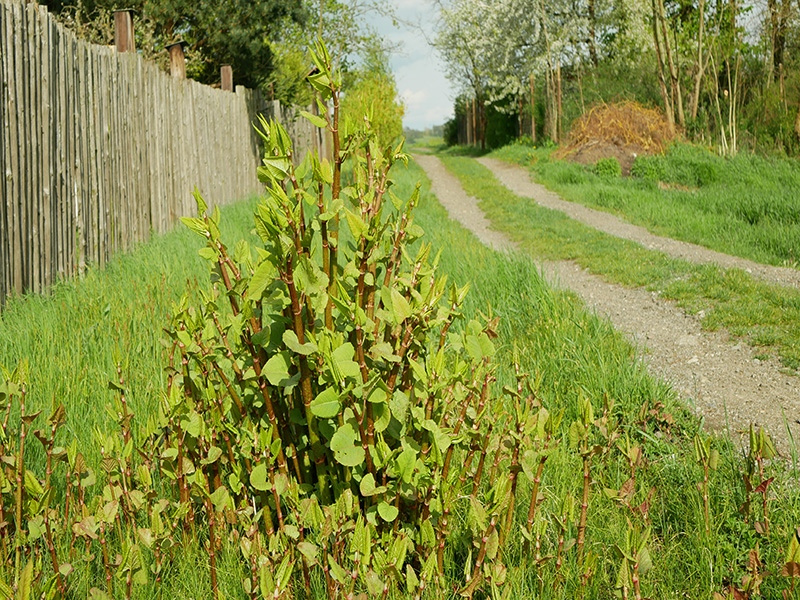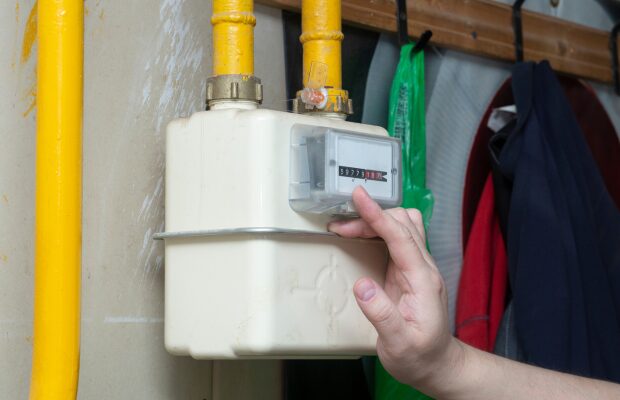What to do about Japanese Knotweed
Japanese Knotweed can cause major problems for property owners and is one of the most invasive plants in the UK.
In London alone, there are thousands of infestations – with one discovered at the Olympic Park in Stratford even costing the government £70 million to eradicate prior to the 2012 Games.
“It is best to always get professional help where Japanese Knotweed is concerned,” says Rob Smith, Managing Director of Ellis & Co.
“Due to its invasive properties, Knotweed can cause damage to your property and will devalue your house.
“We suggest you confront the problem immediately otherwise you are at risk of not being able to sell your home.”
In this guide, we’ll explain:
What Japanese Knotweed is and how to spot it
The damage it can do to properties and how it affects valuations and sales
The best ways to get rid of it and what you’ll need to pay to do so
What is Japanese Knotweed?
Japanese Knotweed is a highly invasive bamboo-type plant considered a weed in the UK.
Its roots can spread over large distances, while its thick stems and large leaves can take over outdoor spaces extremely quickly.
The plant was first introduced into the UK in Victorian times, with people attracted to its large leaves and white flowers.
Since then, however, it’s spread throughout urban areas – causing problems for property owners due to its capacity to invade pipework and even foundations.

What does Japanese Knotweed look like?
Identifying Japanese Knotweed is the first step towards eradicating it.
The weed grows in large clumps, with its shoots resembling sticks of asparagus.

The shoots quickly grow up to 10 centimetres every day during spring, becoming green bamboo-like canes with purple flecks.
Shovel-shaped rich green leaves also emerge from the stems, which can grow up to three metres high, with creamy white flowers present during summer.
Japanese Knotweed is often mistaken for other plants, including Russian Vine and Hedge Bindweed.
What damage does Japanese Knotweed cause?
Because Japanese Knotweed grows so quickly and its roots expand over a wide area, it can quickly cause damage to property structures.
Roots can spread up to seven metres, while the plant itself often grows to more than two metres in height.
If Japanese Knotweed is present within seven metres of a property, there’s a strong chance its roots are already under the foundations.
The roots can then exploit gaps or cracks in pipes or concrete, blocking drains and weakening foundations.
If the plant grows close to boundary walls, sheds, or fences, it can weaken those structures, causing them to collapse.
How does Japanese Knotweed affect property values?
It’s estimated that the presence of Japanese Knotweed can reduce a property’s value by 5% and 15%.
Reductions in value are usually relative to the cost of removing the infestation, although more serious problems with the plant can make a property unsellable.
Do you have to tell a buyer about Japanese Knotweed?
You must tell a buyer
if Japanese Knotweed is present on your property due land representation rules.
A buyer’s solicitor will request a TA6 property information form which includes a question about the presence of Japanese Knotweed.
This must be answered accurately, or you could be sued for misrepresenting your property should Japanese Knotweed be discovered by the buyer’s surveyor.
Can you get a mortgage if a property has Japanese Knotweed?
Many mortgage companies will refuse to lend if Japanese Knotweed is present on a property’s land.
However, the rules vary from lender to lender and often depend on the distance between the property and the infestation.
The Royal Institute of Chartered Surveyors (RICS) ranks Japanese Knotweed problems with three severity categories if the weed is found within the boundaries of a property:
|
Category |
Description |
|
Category A |
Japanese Knotweed is present and causing visible damage to a major structure |
|
Category B |
Japanese Knotweed is present and is not causing damage to structures, but could prevent or restrict the use of an outdoor space |
|
Category C |
Japanese Knotweed is present but is not causing damage to structures or restricting the use of outdoor space |
Most lenders, according to RICS, will restrict lending until a specialist report has been carried out if a property is classed as Category A or B.
A separate Category D rating is used for Japanese Knotweed that is found outside of the property’s boundaries but within three metres of the boundary.
How to get rid of Japanese Knotweed
There are three main ways to eradicate Japanese Knotweed:
Excavation
Herbicide treatment
A combination of excavation and herbicide treatment
1. Excavation
Digging Japanese Knotweed out of the ground is often one of the most effective ways to eradicate it.
However, when excavating a Japanese Knotweed infestation, it’s vital to remove all traces of the plant and its rhizomes to stop it coming back in the future.
Professional knotweed excavation companies will screen the soil they dig out and separate the remnants of the plant from the soil before disposing of the former at a specialist landfill site.
Because of the work involved and the lawful disposal of the plant material, excavation is often the most expensive way of eradicating Japanese Knotweed.
2. Herbicide treatment
The best way to stop of the spread of Japanese Knotweed is to treat the plant with a herbicide, keeping it in one place rather than transporting plant material around through excavation and disposal.
Glyphosate weed killer is often used to treat the plant and while this is a more cost-effective way to deal with an infestation, several treatments over many years are often required to completely get rid of it.
Can you remove Japanese Knotweed yourself?
Japanese Knotweed can regrow from a piece of root no bigger than a fingernail.
So, attempting to remove it yourself often means you’ll spread the plant to other parts of your property – or even into neighbouring homes.
Treating Japanese Knotweed yourself with herbicide or weed killer is possible, but it’s usually best to speak to a professional eradication company about your options before taking any action.
What is the fastest way to get rid of Japanese Knotweed?
The fastest way to get rid of Japanese Knotweed is through excavation.
However, any remnants of the plant left behind could cause new growth in the future.
While herbicide treatment is often required over several years and growing seasons, a long-term treatment plan like this is often the best way to limit the plant’s spread and remove it completely.
Does the council deal with Japanese Knotweed?
Local councils aren’t responsible for dealing with Japanese Knotweed on privately owned land such as residential properties.
However, if you spot Japanese Knotweed on public or council-owned land, you should report it.
Japanese Knotweed and the law
Disposal of Japanese Knotweed is tightly controlled and it’s illegal under the Wildlife and Countryside Act 1981 to cause growth in the wild through incorrect disposal.
It’s also illegal to add the plant material to compost heaps or dispose of it in garden waste bins under the Environmental Protection Act 1990.
Further reading…
How to maximise space if you have a small garden








